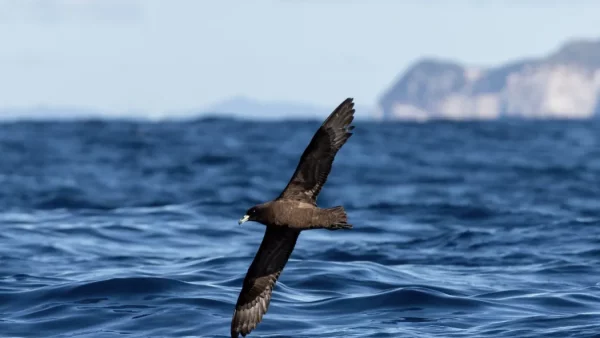A lone rat caught on camera on the otherwise pest-free paradise of Motutapu Island has been killed after months of running amok, in a sting costing taxpayers thousands of dollars.
The island in Auckland’s Hauraki Gulf is directly behind Rangitoto Island, and the Norway rat sparked a five month search after it was spotted by a ranger in April.
The rat, identified on a DOC AI CAM camera, on Motutapu. Photo / Department of Conservation
Together with Ngāi Tai Ki Tāmaki, the Department of Conservation (DOC) deployed a swat team of cameras, conservation dogs, bait and traps around the island.
DOC said the cost of the eradication effort was still being reconciled but would be about $50,000, excluding staff hours.
DOC Island Biosecurity Advisor Claire Warren said the rat was last filmed stocking up on toxic bait over four days in August and has not been spotted since.
Last week a DOC rodent detection dog and handler undertook a sweep of the island with no detections – and the rat was declared dead.
A Ngāi Tai Ki Tāmaki Trust staff member setting up a DOC camera. Photo / Department of Conservation
A network of 50 cameras was the key tool that led to the predator’s demise, including two new thermal imaging cameras, named DOC AI CAM, developed by conservation group Cacophony Project.
“We used a combination of standard trail cameras and AI cameras that gave us important and surprising information about the rat’s behaviour, routes and favourite locations,” Warren said.
“The cameras revealed that the rat travelled from a suspected nest site to McKenzie Bay on Rangitoto Island, around 5.8 km away, which is much further than we ever expected.”
New thermal imaging cameras, named DOC AI CAM that were developed by the Cacophony Project. Photo / Department of Conservation
She said the camera network helped trackers conclude that there was only one rat on island, and decide where to lay bait and traps.
“The AI cameras sent us alerts when the rat was seen on camera. This gave us real-time information about the rat’s location and direction of travel, which really helped us target it,” Warren said.
The DOC team used a variety of trap types and lures such as peanut butter, rat bedding and rat recordings, but the rat evaded these.
“With every incursion we have, we learn more about how to track and kill mammalian pests. When they evade all your attempts to entice them into a trap, it forces you to think laterally and innovate,” Warren said.
Motutapu is home to one of New Zealand’s rarest birds, the tūturuatu /shore plover, with just 250 individuals remaining nationwide.
Warren said a single rat could have devastated the small island population.
A young shore plover Photo / Dave Houston / DOC
In 2022, DOC spent nearly half a million dollars on an operation to kill one stoat on Chalky Island/ Te Kākahu-O-Tamatea.
The island in Fiordland had been predator-free since 1999.
-RNZ











